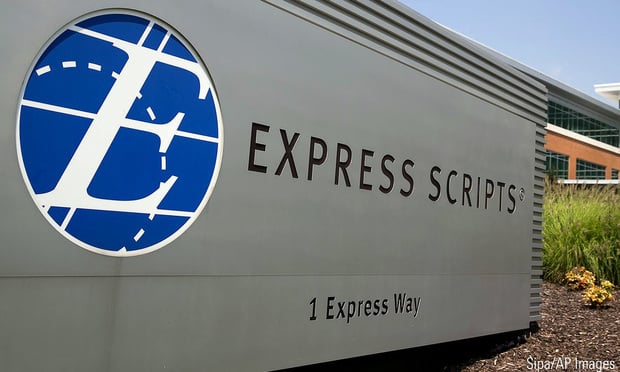 Although new regulations and government programs such as PPACA have brought big changes to the insurance brokerage industry, another quiet revolution is also brewing: Brokers are consolidating and joining forces. The days of individual agents offering one type of insurance are waning; larger firms and one-stop-shopping models are becoming the norm.
Although new regulations and government programs such as PPACA have brought big changes to the insurance brokerage industry, another quiet revolution is also brewing: Brokers are consolidating and joining forces. The days of individual agents offering one type of insurance are waning; larger firms and one-stop-shopping models are becoming the norm.
The new approach often brings together health insurance, property, and casualty, even financial services, under one roof. Industry experts say the development is picking up speed as consumers start to see brokerage firms as they see lawyers: a professional service that may have one location, but many specialists.
Driven by demographics?
“We're seeing an acceleration in consolidation and merger/acquisition activity,” says Dave Evans, senior vice president at Independent Insurance Agents & Brokers of America/Trusted Choice. “You're seeing more of this under one roof and that's probably going to continue.”
Industry observers say one of the reasons that these changes are taking place is that the broker community is aging. “The average age for an individual small broker is typical in their late-50s now. They're retiring and there simply aren't as many entering into that profession. So you have this consolidation taking place,” says Gregory Bailey, co-founder and CEO at Denim Rivet and general partner at Insure VC.
In addition, the insurance brokerage industry is following other industries such as the legal business in that offices are offering one-stop shopping — one office with many specialties.
“These days, it's hard to find a typical flat-out insurance broker,” Bailey says. “Most have appropriate licenses and registrations to offer a multitude of products and services. Americans want to get advice from one place rather than going to multiple places. The days of individual brokers only providing a monolithic approach to services are numbered. The agents who are really growing their practices are providing a lot of different types of services.”
The challenges of online marketing
When discussing the changing nature of brokerages, Evans also points to the ongoing revolution in technology and communication. “The skill set of running an agency is changing as more agencies look to do things from a digital marketing and social media perspective,” he says. While old-fashioned, face-to-face networking is going to continue to be important, he notes that more and more people are looking for insurance services online. “Brokers have to show up in that space,” Evans says.
John Sarich, vice president of strategy at VUE Software, notes that this need to keep up with the latest technology is also a factor in the consolidation trend among agencies. “One of the things that is driving a lot of this is the technology and the cost of the technology,” he says.
The P&C market is especially impacted by the challenges of the digital marketplace, according to a recent Ernst and Young report, the EY 2016 Property-Casualty Insurance Outlook.
“Driven by their interactions in other digitally enabled industries, such as retail and banking, property-casualty customers are increasingly demanding a more sophisticated and personalized experience — including digital distribution, anytime access, premiums accurately reflecting usage and individual risk, and higher levels of product customization and advice,” the report notes.
Sarich says that brokers may have to expand their partnerships with carriers in order to meet the growing demand for more online services. “Carriers have thousands of people in IT, but brokers have a much more limited system. At some point, the carriers are going to have to step up and start providing technology to the agencies, because brokers are the number one stop for customer service,” he says.
The future of P&C agencies
The EY report found that successful P&C brokers will react to industry changes quickly, be innovators on the technology side, and have a plan in place for merger and acquisition possibilities. Easier said than done, no doubt, but Sarich emphasizes that customer service is still a great backstop for any brokerage.
“The successful agencies that have grown a large P&C business did it by providing a lot of the ancillary services,” he says. “For example, an agency might have a couple of claims advocates on staff who can advocate for their clients, whether it be a worker's comp claim or a liability claim. They're providing that service to their client.”
Evans agrees that giving insurance customers more options is one way to stay competitive. “We think that it helps consumers to have plenty of choice and lots of distribution points. We don't want to migrate toward the model of Canada, which has fewer carriers and fewer brokers,” he notes.
A massive consolidation of insurance brokerages is not inevitable, Evans adds, noting that consumers still value a broker who is close to home. “It requires a real proactive review of the agency's capabilities,” he says. “Part of that process today is attracting more people to the agency who might have a marketing or technology-oriented background. That comes with some expense, but it pays for itself when it's successful. We need to look at the kind of people we're attracting; obviously, attracting millennials and people of diverse backgrounds is also important.”
The path of least resistance
Sarich says the bottom line may be that “the consumer wants the path of least resistance.” Whether it be from a large agency or a local broker with a range of offerings, agency experts agree customers are expecting more of the one-stop-shop model.
Bailey notes that as more Americans become freelancers or private contractors, their approach to insurance will evolve, too, as people will need different services for different work circumstances. “In my opinion, the days of the independent broker only providing a monolithic approach to services are numbered,” he says. “Those who are growing their businesses, growing their practices, are providing a lot of different types of services.”
© 2025 ALM Global, LLC, All Rights Reserved. Request academic re-use from www.copyright.com. All other uses, submit a request to [email protected]. For more information visit Asset & Logo Licensing.







